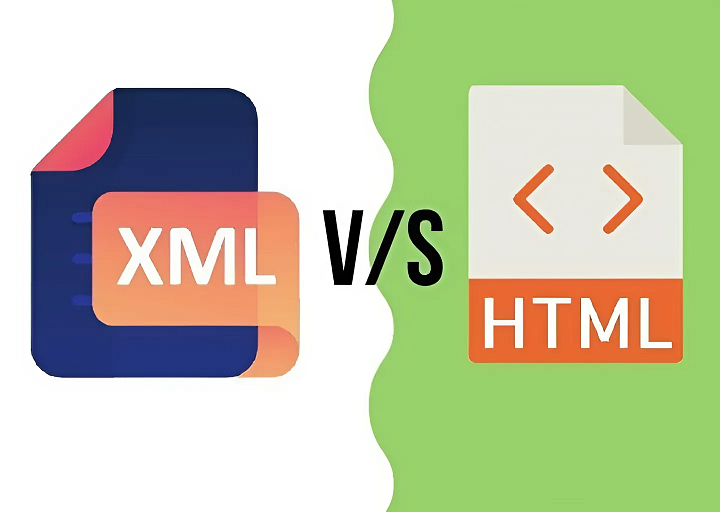In the realm of website management and SEO (Search Engine Optimization), sitemaps play a crucial role in ensuring that both search engines and users can navigate and understand the structure of a website. Two primary types of sitemaps exist: XML sitemaps and HTML sitemaps. While they serve similar overarching purposes, they are fundamentally different in their design, function, and target audience. This article will delve into the differences between XML and HTML sitemaps, outlining their unique characteristics and uses.
What is a Sitemap?
A sitemap is essentially a blueprint of a website, listing all the pages and their relationships to one another. It helps search engines crawl and index the site efficiently, ensuring that all content is discoverable and ranked appropriately. Sitemaps also assist users in navigating the site, especially if it has a complex structure or a large number of pages.
XML Sitemap
An XML (Extensible Markup Language) sitemap is designed primarily for search engines rather than human visitors. It provides a list of all the URLs on a site, including additional metadata about each URL, such as the last update date, the frequency of changes, and the priority of the URL relative to other pages on the site.
Characteristics
- Machine-Readable: XML sitemaps are structured specifically for search engines, making it easy for them to read and understand the site’s content.
- Comprehensive Coverage: They include every URL on the site, which ensures that no page is left unindexed by search engines. This is particularly useful for large websites with numerous pages.
- Metadata Inclusion: XML sitemaps can provide additional information about each page, such as how often it is updated, which can help search engines determine how frequently they should crawl the site.
- SEO Benefits: By listing all URLs and providing metadata, XML sitemaps can improve a site’s SEO by ensuring that all pages are indexed and that search engines understand the site’s structure and update frequency.
Example of XML Sitemap
<?xml version="1.0" encoding="UTF-8"?>
<urlset xmlns="http://www.sitemaps.org/schemas/sitemap/0.9">
<url>
<loc>http://www.example.com/</loc>
<lastmod>2023-06-01</lastmod>
<changefreq>monthly</changefreq>
<priority>1.0</priority>
</url>
<url>
<loc>http://www.example.com/about</loc>
<lastmod>2023-05-01</lastmod>
<changefreq>monthly</changefreq>
<priority>0.8</priority>
</url>
</urlset>HTML Sitemap
An HTML (HyperText Markup Language) sitemap is designed primarily for human visitors. It provides a structured list of links to all the important pages on a site, typically organized in a way that makes it easy for users to find what they are looking for.
Characteristics
- User-Friendly: HTML sitemaps are intended to enhance the user experience by providing an easy-to-navigate list of the site’s pages.
- Accessibility: They help users, especially those who might be unfamiliar with the site, to find the information they need quickly and efficiently.
- Navigation Aid: HTML sitemaps act as a secondary navigation tool, complementing the main menu and other navigational elements on a site.
- SEO Benefits: While their primary purpose is to aid users, HTML sitemaps can also indirectly benefit SEO by ensuring that all important pages are easily accessible, which can improve user engagement and reduce bounce rates.
Example of HTML Sitemap
<!DOCTYPE html>
<html>
<head>
<title>HTML Sitemap</title>
</head>
<body>
<h1>HTML Sitemap</h1>
<ul>
<li><a href="http://www.example.com/">Home</a></li>
<li><a href="http://www.example.com/about">About Us</a></li>
<li><a href="http://www.example.com/services">Services</a></li>
<li><a href="http://www.example.com/contact">Contact</a></li>
</ul>
</body>
</html>Key Differences
Target Audience
- XML Sitemap: Primarily intended for search engines.
- HTML Sitemap: Primarily intended for human visitors.
Format and Structure
- XML Sitemap: Uses XML format, which is machine-readable and includes metadata about each URL.
- HTML Sitemap: Uses HTML format, which is human-readable and designed for ease of navigation.
SEO Impact
- XML Sitemap: Directly impacts SEO by ensuring all pages are indexed and providing search engines with important metadata.
- HTML Sitemap: Indirectly impacts SEO by improving user experience, which can lead to better engagement metrics.
Usage and Implementation
- XML Sitemap: Often submitted to search engines via tools like Google Search Console.
- HTML Sitemap: Integrated into the website’s navigation, accessible to all visitors.
Conclusion
Both XML and HTML sitemaps are essential tools for effective website management and SEO. XML sitemaps ensure that search engines can crawl and index all pages on a site, enhancing the site’s visibility and search ranking. HTML sitemaps, on the other hand, improve the user experience by providing an easy-to-navigate structure, helping visitors find the information they need quickly.
Understanding the differences between these two types of sitemaps allows webmasters to utilize both effectively, ensuring that their site is both user-friendly and optimized for search engines. In a well-rounded SEO strategy, both XML and HTML sitemaps have their place, working together to improve the overall performance and accessibility of a website.

